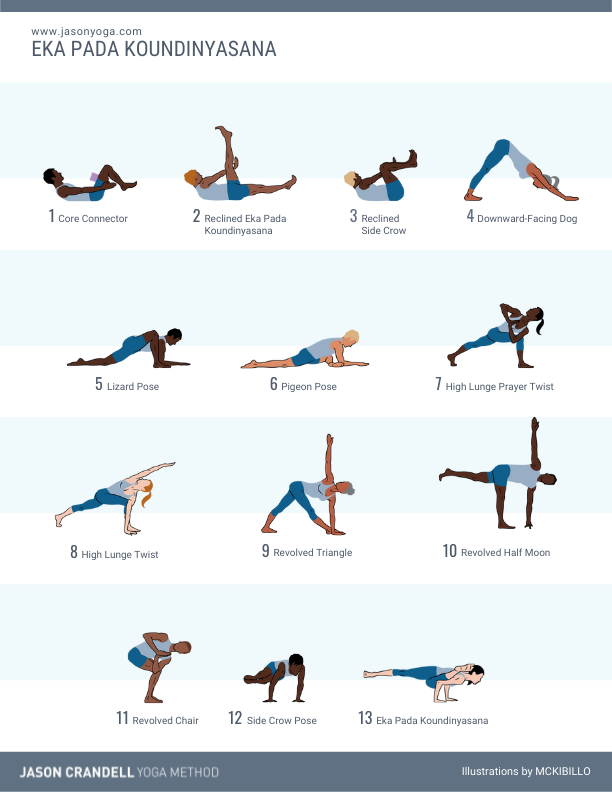WHY THIS EKA PADA KOUNDINYASANA SEQUENCE WORKS
Once I follow tough postures I’ve to be strategic. Since I don’t have the pure flexibility or uncooked power to will myself into superior postures like Eka Pada Koundinyasana, I’ve to emphasise preparation, environment friendly leverage, and method. For me, this implies breaking down tough postures into small, accessible parts.
EKA PADA KOUNDINYASANA QUESTIONS AND ANSWERS
I usually ask myself three questions once I take a look at a demanding posture like Eka Pada Koundinyasana I:
1. What are the legs and hips doing within the pose?
2. What are the core and backbone doing within the pose?
3. What are the shoulders and arms doing within the pose?
It’s a easy, simple course of that helps me — and will help you — take a fancy pose and boil it down into manageable components. One good thing about this course of is that it gives you with facets of each posture you could work on even when you can’t do a selected pose in its’ entirety.
Once I apply these inquiries to Eka Pada Koundinyasana I, I get easy, simple solutions. The hips, legs, backbone, and core are in Parivrrta Trikonasana The shoulders and arms are in Chaturanga. In different phrases, Eka Pada Koundinyasana I, is Revolved Triangle Pose on prime of Chaturanga. So, this sequence focuses on getting ready for a deep Revolved Triangle Pose and a robust Chaturanga.
Let’s break it down slightly additional:
POSES 1-4
The primary three postures will get up your core. Extra particularly, the 2nd and third postures within the sequence will fire-up your obliques since they embody a demanding twist. These postures set the tone for the sequence by offering you with a preview of the postures and actions that can observe. The 4th posture, Downward Dealing with Canine, provides you a clean transition from the reclined postures to the hip-opening lunges.
POSES 5-6
Admittedly, the hamstrings and adductors—that are centered on in pose #5—are usually not large parts of Eka Pada Koundinyasana. However, these of you with tight hamstrings will profit from the inclusion of lizard pose, since it can put together you for Revolved Triangle and Revolved Half Moon. Working towards Pigeon Pose will put together you for the upcoming twists by creating extra mobility in your outer hips and IT bands.
POSES 7-11
Poses 7 by means of 10 offer you a simple development of standing twists. Every twist builds on the earlier twist because the development slowly will increase in demand. These postures put together your outer hips, IT bands, and backbone for the calls for of Eka Pada Koundinyasana. The eleventh pose, Revolved Utkatasana, gives you with a standing twist that intently resembles the following posture within the sequence—Facet Crow, or Parsva Bakasana.
POSES 12-13
Parsva Bakasana is the inspiration for all arm balances that embody a twist. While you develop the power, flexibility and general coordination to do that pose proficiently, you’re additionally setting the stage for different twisting variations. Additionally, Parsva Bakasana is a good pose for transitioning into Eka Pada Koudinyasana.
See additionally Important Sequence: Open into Hanumanasana
{illustration by MCKIBILLO}

